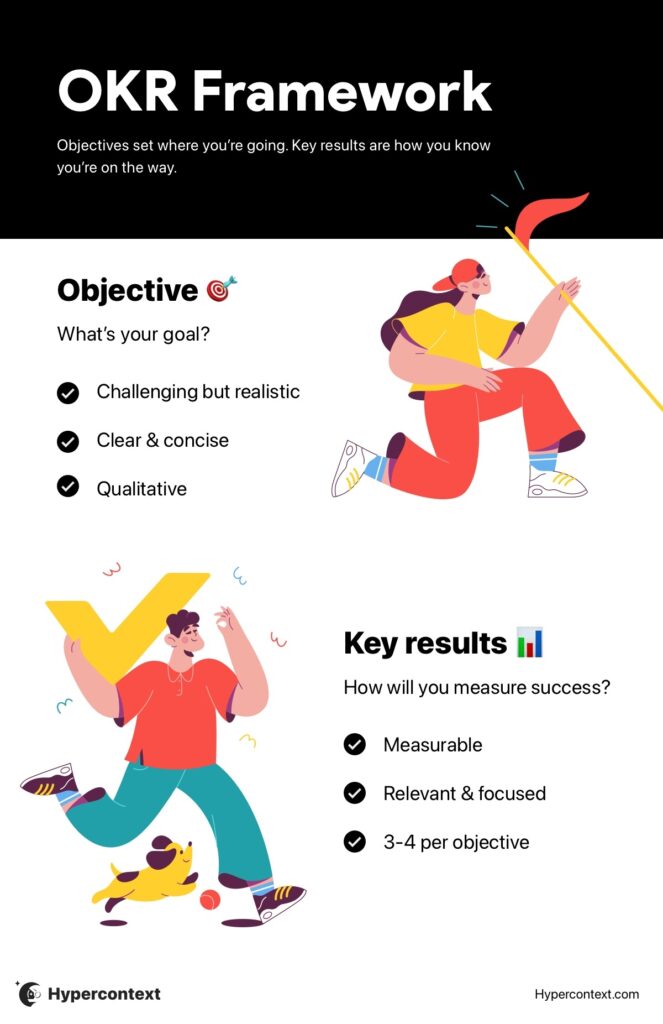Discover the secret behind transforming traditional organizations into high-performing powerhouses with the game-changing OKR methodology.

Table of Contents
- Assessing Readiness for OKRs
- Setting Clear Objectives
- Establishing Key Results
- Cascading OKRs Throughout the Organization
- Tracking and Monitoring OKRs
- Overcoming Resistance and Challenges
- Celebrating Successes and Learning from Failures
- Long-term Benefits and Impact
- Conclusion
Welcome to the Objectives and Key Results world, commonly known as OKRs. This goal-setting framework has been gaining popularity among tech-savvy and traditional businesses. This article will explore how OKRs can be implemented in traditional organizations to drive impactful outcomes and revolutionize their success.
Assessing Readiness for OKRs
Before diving into implementing OKRs, evaluating the organisation’s readiness is crucial. Traditional organizations often have deeply ingrained cultures and mindsets that might resist change. Therefore, assessing the organization’s culture and mindset is of utmost importance.
Identifying key stakeholders and decision-makers who will drive the OKR implementation is also necessary. These individuals will be vital in spearheading the transformation and overcoming resistance.
Setting Clear Objectives
Once the organization is ready for OKRs, the next step is to set clear objectives. This involves identifying the overall vision and mission of the organization. By aligning OKRs with the organization’s higher purpose, you can ensure that your efforts are focused on impactful outcomes.
Defining specific and measurable objectives is pivotal in the OKR process. Objectives should be ambitious yet attainable, providing a clear direction for the organization. Prioritizing these objectives based on their potential impact allows you to allocate resources effectively.
“Unlock your limitless potential and revolutionize your organization with OKRs, the ultimate secret to unlocking success. 💡 #OKRs #SuccessRevolution https://okrinstitute.org/the-power-of-okrs-how-to-use-this-goal-setting-framework-to-transform-your-mindset-and-achieve-your-dreams/“
Establishing Key Results
Alongside objectives, key results need to be established. Key results are measurable outcomes that indicate progress towards achieving the objectives. Setting realistic and achievable key results is crucial to ensure employee motivation and engagement.

Structuring key results for each objective helps break down the larger goals into manageable steps, allowing teams and individuals to focus on their specific contributions. This hierarchical structure promotes alignment and clarity throughout the organization.
Cascading OKRs Throughout the Organization
Convincing and involving teams and individuals in the OKR process is vital to drive success. Communication and alignment play a crucial role in cascading OKRs throughout the organization.
Transparently communicating the OKRs and how they connect to team and individual goals enables employees to understand their roles in achieving the desired outcomes. Encouraging cross-functional collaboration and coordination helps break silos and fosters a cohesive working environment.
Empowering teams to set their OKRs generates a sense of ownership and accountability, fostering a culture of continuous improvement and innovation.
Tracking and Monitoring OKRs
The effectiveness of OKRs depends on effective tracking and monitoring. Establishing a robust tracking system or employing OKR software helps monitor progress and provides visibility to all stakeholders.
Regularly reviewing progress and updating OKRs ensure that objectives and key results remain relevant and aligned with changing circumstances. This iterative process allows for agility and adaptability in pursuing impactful outcomes.
Transparency and accountability are cornerstones of OKR implementation. Encouraging employees to share their progress and seek support when necessary creates a supportive and productive environment.
Overcoming Resistance and Challenges
Implementing OKRs in traditional organizations might face resistance and challenges. Addressing these hurdles is crucial to ensure successful adoption.
Resistance to change can be addressed by clearly communicating the benefits of OKRs, including increased focus, alignment, and transparency. Employees need to understand how OKRs will benefit them personally rather than viewing them as just another management tool.
Providing necessary training and support helps employees embrace the OKR framework confidently. Addressing their concerns and answering questions bridges the knowledge gap and fosters a smoother transition.
Adapting and fine-tuning OKRs based on feedback is important for continuous improvement. As the organization gains more experience with OKRs, it is essential to iterate and optimize the process to maximize impact.
Celebrating Successes and Learning from Failures
Recognizing and celebrating achievements is a vital aspect of the OKR journey. By acknowledging and rewarding successful outcomes, you motivate and encourage employees to strive for excellence in pursuing their objectives.

Encouraging a culture of continuous learning and improvement is another crucial element of OKR implementation. Embracing failures as opportunities for growth and learning allows organizations to adapt and improve their OKRs moving forward.
Utilizing OKR retrospective meetings to analyze failures and iterate on objectives and key results fosters openness and a blame-free environment, creating room for innovation and transformative change.
Long-term Benefits and Impact
Implementing OKRs in traditional organizations can deliver numerous long-term benefits, revolutionizing their success.
Increased focus, alignment, and transparency enable organizations to channel their efforts towards impactful outcomes. Improved cross-functional collaboration and coordination break down silos and foster a holistic approach to problem-solving.
Driving impactful outcomes and organizational growth becomes achievable as OKRs provide a framework that empowers employees to make a measurable and meaningful impact.
Conclusion
In conclusion, OKRs can potentially revolutionize traditional organizations by driving impactful outcomes. Organizations can unlock their full potential and achieve sustained success by assessing readiness, setting clear objectives, establishing key results, cascading OKRs, tracking progress, and addressing resistance.
Embracing the OKR framework, celebrating successes, learning from failures, and reaping the long-term benefits allow traditional organizations to thrive in an ever-changing business landscape. So, take action and seize the opportunity to make an impact with OKRs today!